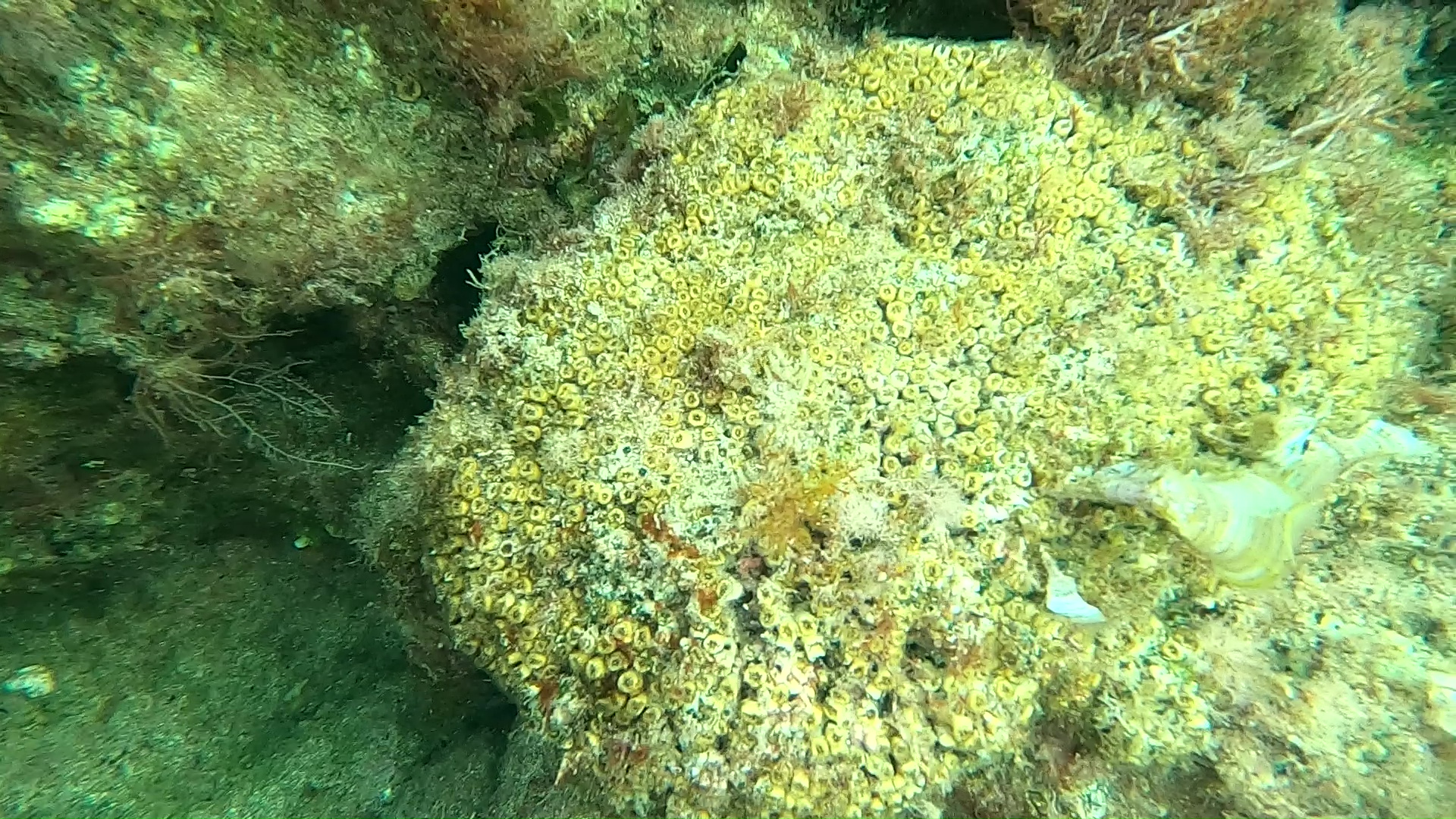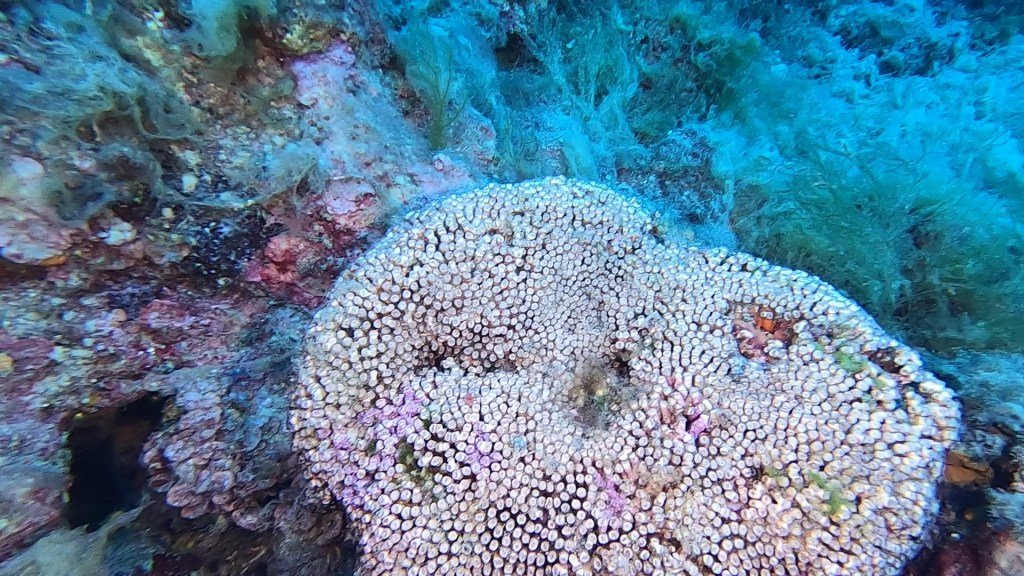Coral loaf - Cladocora caespitosa
Cladocora caespitosa, commonly known as Coral loaf or “cushion coral”, is a stony coral of the subclass Hexacorallia, phylum Cnidarian. This species forms the only true coral reef in the Mediterranean Sea. Madrepora a Cuscino Cladocora Caespitosa IntotheBlue.it

Description
Polyps are a clear maroon colour, around 5 mm in diameter and form cushion-shaped colonies, in symbiosis with Zooxanthella algae. They produce deposits of calcium carbonate which form the calciate structures in which they live. It is the largest stony coral in the Mediterranean, reaching up to 50 cm in diameter. C. caespitosas have an average generation length of about 30 years.

Distribution and habitat
This species is endemic to the Mediterranean Sea, where it is attested already in the Upper Pliocene. It is common on rocky seabeds between a few metres and 60 metres in depth. In the marine lagoon of Veliko Jezero, in the marine reserve of Mljet island, Croatia, there is a small coral reef made up of C. caespitosa. This is the only true coral reef in the Mediterranean.

Reproduction
The colonies grow through budding, but the species spreads through the settlement of plankton-like larva on seabed suited to colonisation.
https://it.wikipedia.org/wiki/Cladocora_caespitosa
The Hexacorallia (Hexacorallia Haeckel, 1896) are a subclass of the Anthozoans which groups together very various forms, colonial or solitary, provided with hollow tentacles, rich in cnidoblasts. It includes approximately 3500 species of sea anemones, builder corals (called madrepores or scleractinias), covert anemones and spiny black corals.
Description
The symmetry of the hexacorals is hexameric, with septa present in multiples of six. The septa, complete or incomplete, are arranged in pairs. Only the orders Antipatharia (black corals) and Ceriantharia (tube-like anemones) have single septa. A juvenile octopus typically has six pairs of septa and twelve tentacles, one for each interseptal space. As it grows, a new ring may appear with another six paired septa and their respective 12 tentacles.
They can be devoid of or provided with a skeleton, which if present is calcareous or chitinoid, and develops on the surface of the ectoderm.
https://it.wikipedia.org/wiki/Hexacorallia
Video Gallery
